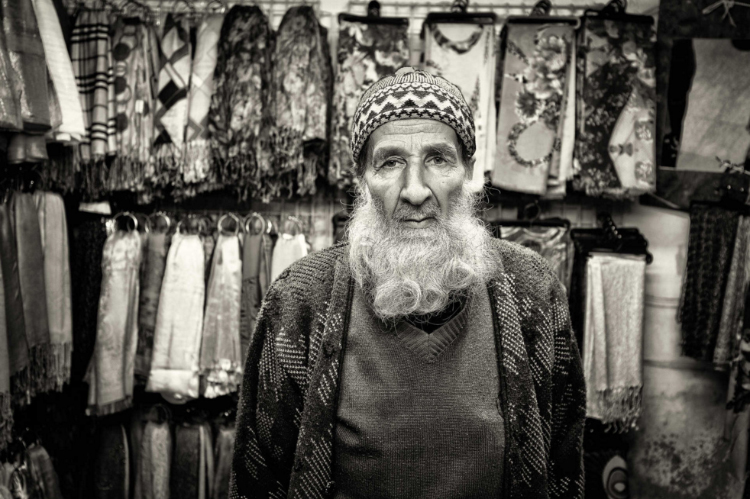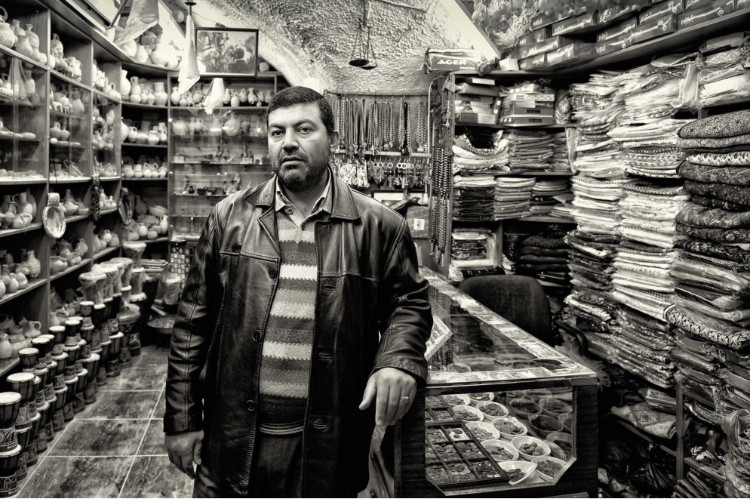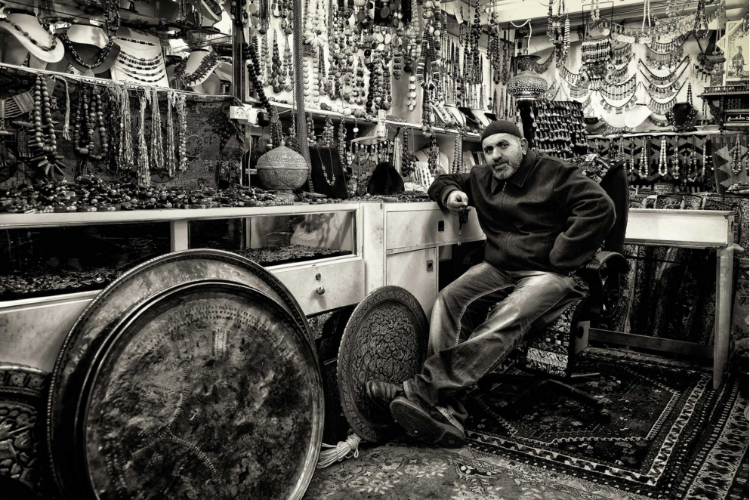In the Old City
Ilan Wittenberg’s Faces of Jerusalem
LEONARD BELL

ILAN WITTENBERG White Beard 2015 Monochrome photograph
Jerusalem’s small, walled Old City has been the site of conflict and contestation longer than any other place in the world. Too much blood has been spilt. Over the last century it has been governed successively by the Ottoman Empire, the British in Mandate Palestine, Jordan from 1948 and Israel from 1967. Its population is diverse, ethnically and religiously. There are innumerable different faces here and in the much larger, surrounding modern city of Jerusalem. To try to list all the national and cultural groups found there would exhaust the allocated space for this short article. Ilan Wittenberg’s faces are those of people, predominantly stallholders with their merchandise, occupying the Old City’s souks (markets).
‘Faces in Jerusalem’ might be more apt, since they do not offer an overall cross-section of the city’s people. We encounter a selection from among the hundreds of thousands of the city’s inhabitants. They are not identified by name, presumably so that viewers will not be tempted to see them first and stereotypically as, for instance, Arab, Jewish, Muslim or Christian, rather than as discrete individuals living their day-to-day lives. That is the portfolio’s strength, its focus on individual human beings. Each is a world in himself, not a representative of a category of person. This approach may well derive from Wittenberg’s Jewish upbringing; that every person’s life in the here and now is valuable.
The photographs are not candid or taken ‘on the run’ like classic street photography. The people are posed, after Wittenberg had chatted with them, and made known who he was and where he came from. An ultra-sharp, all-over focus down to the last detail in these monochrome sepia-toned images produces a hyper-real effect. That serves to accentuate the sense of bodily presence of each individual, as well as the concreteness of every inanimate thing, whether a trinket for sale or an ancient stone. We do not see like this in actuality. Our everyday seeing involves centralised focus, with progressive diminution of focus and increase of blurring towards the peripheries of our vision. What could be the point of Wittenberg’s picturing method? Maybe it jolts viewers to see and think afresh, so that how they view these people is not determined by preconceptions and typifications in which individual human beings are subsumed (and subordinated) by a collective and value-laden identity. ‘Lost’ in a crowd, these characters are not.

ILAN WITTENBERG Antiques Merchant 2015 Monochrome photograph

ILAN WITTENBERG Prayer Beads 2015 Monochrome photograph

ILAN WITTENBERG Souvenirs Shop 2015 Monochrome photograph

ILAN WITTENBERG Gas Bottles 2015 Monochrome photograph
